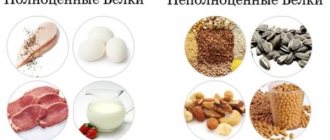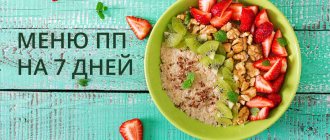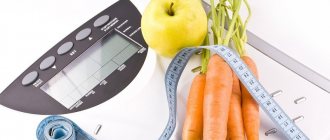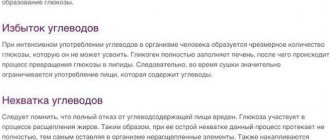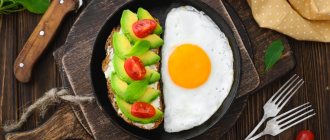Drying the body is a short-term and rapid process of losing adipose tissue, which achieves muscle relief without losing mass. Is it possible to lose a few kilograms in one month and do it safely? Yes, if everything is done correctly. Even during a period when it is impossible to go to the gym, drying the body is quite real, because 70% of its success depends on nutrition. How to eat and exercise properly during this period in order to get good results without compromising your health, we will consider below.
How to dry properly to improve muscle definition for men?
First, let's look at the general scheme, which is more competitive. Let me remind you that the term “cutting” comes from professional bodybuilding and is used to obtain muscle separation, that is, a complete absence of fat, in which muscle division is visible.
This form is not for life; maintaining such dryness for a long time leads to numerous destructive processes, ranging from muscle fibers to internal organs.
Therefore, before considering the drying scheme, I want to warn you that this is for professional athletes. Next, we’ll figure out how to reduce fat tissue without resorting to strict restrictions.
Diet
An athlete's daily diet should include:
- Proteins – 50-60%.
- Fats – 10-20%.
- Carbohydrates – 20%.
Such a diet leads to a sharp decrease not only in fat, but also in strength in general, because a deficiency of carbohydrates, as the main source of energy, leads to weakness, apathy, nervousness, and the like.
To lose weight more safely, but somewhat more slowly (after all, if you are not preparing for a competition, why make such sacrifices?), consider the following scheme.
- B – 50%.
- F – 20%.
- U – 30%.
A larger amount of carbohydrates (compared to the previous regimen) will burn subcutaneous fat more slowly, but safer.
To maintain muscle during a period of caloric deficit from carbohydrates, the body needs to provide an overdose of amino acids, that is, protein to preserve muscle mass. A deficiency of both carbohydrates and proteins will contribute to the burning of muscle tissue. Therefore, you should get used to the fact that there will be a lot of meat on such a diet!
Calculation of BZHU
A simple example for calculating BJU for a man weighing 80 kg:
- Proteins per day: 80 (weight) x 5 (protein, g per kilogram of weight) = 400 g of pure protein.
- Fat: 80 x 20 = 160 g pure fat.
- Carbohydrates: 80 x 30 = 240 g.
Next, you need to use the table of BZHU products and find out how much pure nutrient is in a particular product.
That is, 100 g of chicken fillet contains approximately 23 g of pure protein. And a person weighing 80 kg needs to eat 400 g of pure protein per day, which is almost 1.5 kg of chicken fillet.
Basic drying rules
- You need to start drying gradually. Any restrictions should not be introduced abruptly. Eating carbohydrates, which accounted for 60% of the total calories, switching to a low-carb diet is not only difficult, but also harmful. Before the start of drying, you should gradually, once a week, reduce the amount of carbohydrates by 10%, so by the start of drying their amount will decrease by 30%.
- Breaks between meals should be short. When drying, you need to eat small amounts every 2-3 hours. Long breaks even without the onset of hunger (which is hardly possible during drying) provoke catabolic processes, since protein cannot saturate and provide energy for a long time, so the body will take the lack of nutrients from its own muscles.
- Reduce the amount of salt, but don't eliminate it. The fact is that during drying, athletes refuse to use salt in order to achieve dry muscles, which is achieved by reducing the water level in the muscles, since salt can retain fluid. The abolition of salt threatens the loss of calcium and increased bone fragility. Such methods are unjustified if we talk about the form “for oneself” and not for the stage. Therefore, consume 1-2 grams of salt per day to maintain mineral and water-salt balance.
- Remove bad habits. Any alcoholic beverages and tobacco products are prohibited. Even the slightest stress leads the body, already susceptible to negative factors from the psyche, to nervous overstrain and exhaustion. Try not to be nervous, sleep more (at least 7 hours).
Next, we’ll take a closer look at what foods are allowed for drying (not competitive).
Exercises for drying the body at home
Training while drying the body is different from usual. During this period, it is necessary to increase the number of approaches and repetitions in exercises and reduce working weights. You can perform circuit training - several exercises in one approach.
In addition to strength training, it is important to pay attention to cardio exercises, 30-40 minutes, for more effective fat burning.
Severely increasing your cardio while reducing your food intake will cause the body to break down amino acids from muscle tissue. Therefore, half-hour training will be the most optimal. After training, you should not eat food for half an hour so that the drying process of the body produces results; you can drink BCAA amino acids or a protein shake to preserve muscles from catabolism. Only through such intensive work on your physique can you achieve your goal.
There are three principles to consider when training:
- increasing repetitions with the same weight;
- increasing the weight for the same rep range;
- reducing rest intervals between approaches, thereby increasing metabolism.
You cannot reduce rest intervals between sets to less than 1 minute.
The rest interval is reduced no more than once every 2 weeks.
Equipment for training at home:
- jump rope;
- horizontal bar;
- bench;
- bars;
- dumbbells.
Each workout involves performing 2-3 circles with mandatory rest between sets.
Sample lesson program:
- Monday:
- pull-ups on the horizontal bar with a wide grip to the chest 10 times;
- rock climber 40 times;
- dumbbell flyes from a lying position 15 times;
- hanging lift on the horizontal bar 15 times;
- dips on parallel bars 20 times;
- standing dumbbell press 20 times.
- Tuesday:
- complete muscle recovery;
- cardio load.
- Wednesday:
- push-ups 20 times;
- squats with weight 20 times;
- squats with deadlifts 20 times;
- pullover with dumbbells 15 times;
- dips on parallel bars 15 times;
- lying crunch 35 times.
- Thursday:
- complete muscle recovery;
- Cardio exercise (running, jumping rope, exercise bike).
- Friday – repetition of the “Monday” complex.
- Saturday:
- muscle recovery;
- cardio.
- Sunday – the body is completely rested.
Budget option for drying menu for a week for men
Of course, the drying period, when proteins predominate in the diet, is more financially expensive than nutrition for weight gain, in which cereals make up the majority of the menu. Here you have to eat not just proteins from protein shakes, cheeses, red fatty meats, any fish and other variety, but exclusively high-quality products with a minimum amount of fat. These include: chicken fillet, turkey, beef, veal, rabbit, lean fish, seafood, low-fat cottage cheese and egg whites.
Dry food itself cannot be cheap; as has already been said, it is necessary to consume proteins from quality products in large quantities. But you can make your diet as budget-friendly as possible by choosing the simplest and most affordable ingredients.
Monday
- Oatmeal with apples.
- Chicken fillet (breast), unpolished rice, cucumber.
- Unpolished rice, 4 egg whites + 2 yolks.
- Chicken fillet, fresh vegetables.
- Cottage cheese.
- Eggs, fresh vegetables (cabbage, cucumber, pepper, herbs).
Tuesday
- Oatmeal with banana.
- Cottage cheese with nuts (15 g).
- Baked hake, buckwheat or rice.
- Buckwheat, fish or chicken fillet, fresh vegetables.
- Fish baked with vegetables.
- Cottage cheese, eggs, kefir.
Wednesday
- Omelet, bread, dried fruits.
- Cottage cheese, apples or grapefruit.
- Rice, boiled chicken breast, salad.
- Chicken breast, salad, cottage cheese.
- Eggs, vegetables.
- Chicken breast, kefir.
Thursday
- Oatmeal, kefir, dried fruits.
- Salad, omelet with cottage cheese, buckwheat.
- Pollock baked with vegetables, rice.
- Fish, eggs, salad.
- Seafood salad.
- Cottage cheese, kefir.
Friday
- Oatmeal, fruit, kefir.
- Unpolished rice, chicken fillet.
- Rice or buckwheat, chicken fillet with vegetables.
- Meat or fish, baked vegetables.
- Salad with egg, vegetables and herbs, boiled squid.
- Squid with egg.
Saturday
- Omelette, kefir, bread with cheese.
- Rice, fruit, low-fat yogurt.
- Rice with vegetables, baked tuna (yellowtail).
- Tuna, salad.
- Mixed vegetables, chicken fillet.
- Eggs, kefir.
Sunday
- Oatmeal, dried fruits.
- Buckwheat, eggs, vegetables.
- Turkey, rice, baked vegetables.
- Cottage cheese, bread with cheese.
- Turkey or chicken.
- Squid and egg salad.
Diet for drying muscles
The basis of the diet when cutting is proteins, which help maintain muscle tone.
Changing your training program is only half the battle. The next stage is diet. In fact, you shouldn’t worry about this, since the best diet is to reduce calorie intake (daily intake is 2000 kcal) and avoid light carbohydrates and fats.
You should not try to reduce your body fat content to a critical level of less than 5%. With such indicators, your body, on the contrary, will aim to replenish its fat reserves, which will negatively affect the drying process. At least 8% is considered optimal! In this case, the drying result will please you much longer.
Fractional meals: menu for the day and week
8.00. Breakfast time.
Option 1: 200 g chicken, 200 g potatoes, 1 tomato
Option 2: steamed or boiled cereal and green tea
Option 3: two eggs, boiled for up to 5 minutes, a cup of coffee with milk or tea with honey
11.00. Lunch.
Option 1: 250 g cottage cheese, 2 tangerines, 1 banana
Option 2: 7 boiled proteins, 2 grapefruits
Option 3: 200 g cottage cheese, 200 ml kefir, 4 tangerines
13.00. Dinner time.
Option 1: hot dishes have not been canceled: soup with vegetable broth or meat, lean meat, or fish
Option 2: vegetable side dish or boiled cereal (wheat, bulgur, etc.), boiled chicken breast (should alternate with fish).
Option 3: a palm-sized piece of lean boiled meat with stewed vegetables and a vegetable salad, sprinkled with a small amount of olive oil.
17.00. Snack time.
Option 1: make yourself a salad (100 grams) with avocado and carrots
Option 2: 20 grams of nuts or a handful of dried fruits.
Option 3: fruit salad – 10 grapes, 1/2 apple, 1 walnut kernel, 1 kiwi, 1 orange, 1/3 grapefruit
19.00. It's dinner time.
Dinner should not be particularly difficult for the body and therefore you should limit yourself to a salad of fresh vegetables and you can eat proteins.
22.00. Last snack.
250 ml 1% kefir or any other low-fat fermented milk products
It is important to know: the last meal should be taken 2 hours before bedtime. It is also worth eating in portions that fit in the palm of your hand.
Extended cutting nutrition program for men for a week
Monday
- Oatmeal with dried fruits.
- Chicken fillet (breast), brown rice, avocado.
- Rice, eggs or fish.
- Baked veal, fresh vegetables.
- Cottage cheese.
- Seafood, fresh vegetables (any).
Tuesday
- Whole grain bread with lightly salted pink salmon.
- Cottage cheese with dried fruits.
- Turkey meat, buckwheat or rice.
- Chicken or turkey fillet, vegetables.
- Pink salmon baked with vegetables.
- Cottage cheese, eggs, kefir.
Wednesday
- Omelette, whole grain bread with tofu.
- Cottage cheese and dried fruits.
- Rice, rabbit meat or beef.
- Chicken breast, vegetable salad.
- Seafood salad.
- Chicken breast, steamed vegetables.
Thursday
- Oatmeal and dried fruits.
- Salad with egg and squid, couscous.
- Tuna baked with vegetables, rice or bulgur.
- Fish or squid, baked vegetables.
- Salad with seafood or red fish.
- Cottage cheese, kefir.
Friday
- Chia seeds soaked in kefir with dried fruits.
- Unpolished rice, boiled beef.
- Buckwheat, chicken fillet with vegetables.
- Tuna or sea bass, baked vegetables.
- Salad with squid and chia seeds.
- Omelette with cottage cheese.
Saturday
- Omelette, bread with cheese, avocado.
- Tofu bread, fruit, low-fat yogurt.
- Rice with vegetables, baked tuna.
- Seafood salad, eggs.
- Mixed vegetables stewed with beef.
- Fish, stewed vegetables.
Sunday
- Oatmeal, dried fruits.
- Buckwheat, beef or veal.
- Turkey, rice, baked vegetables.
- Cottage cheese with bread and avocado.
- Turkey, salad.
- Seafood salad.
A special word about nutrition
It is nutrition that helps achieve maximum results; without it, drying is impossible. During drying, nutrition should be selected in such a way as to accelerate the process of burning accumulated fat, but at the same time there is a high-quality increase in muscle mass. And in this regard, men have a more difficult time, because their metabolic processes are slightly slower. On average, guys may need three months to dry, while for women this process takes half as long - one and a half months.
You should definitely keep a special diary in which you need to keep a complete record of the foods you eat . If the drying is not very effective, the diary will help you find mistakes and avoid them next time.
What to do after hard drying for men
Once you’ve finished drying, you shouldn’t suddenly quit your diet and jump on everything at once. You should also remember that all efforts are not in vain, it is better to maintain the result. Otherwise, a sudden departure from the diet threatens severe swelling and rapid accumulation of subcutaneous fat. Therefore, gradually return previously prohibited foods to the menu - dairy products, pasta, starchy vegetables and cereals. But not all at once, but alternating. For example, once every few days: on Monday you can add pasta, and on Thursday - fatty meat or potatoes, and so on.
How to calculate daily calorie intake
The first thing you should do when starting a diet is to calculate your current daily calorie intake.
The amount of energy you consume each day determines your current body weight and body fat—this daily energy requirement is also called your “weight maintenance calorie level.”
Without making any changes to this indicator, you will not notice significant changes in your body. This is exactly the amount of energy you need every day to maintain your weight and stay in the same physical condition.
Ideally, you should aim to reduce your calorie intake by 20%—about 200 to 400 calories below your number. If you can achieve this, you will definitely see results in a couple of weeks.
Since no two people are the same, everyone has a different metabolic rate. These methods are just a rough guide for finding the right level - you'll have to do your own "experimentation" to determine the exact number.
But here are a few different ways to calculate calories. All you have to do is try each one and decide which suits you best...
Method #1 – Instinctive Approach
If your weight has remained the same for a while, then probably the easiest method for calculating calorie levels to maintain your weight without any complex calculations is the instinctive approach.
Provided you maintain the same weight over a long period of time , chances are you are burning as many calories as you consume.
This is great because all you have to do now is write down everything you eat and cut your calories accordingly. You can reduce your portion sizes or replace them with a lower-calorie, but filling option (you'll learn more about this later).
Method #2 – Formula 14 and 17
The 14 17 formula is a simple calculation you can do to determine your approximate calorie level for weight maintenance. This will give you an idea of how much you need to consume daily to reduce body fat.
You need to solve two equations:
- Your body weight (in kilograms) x 14 = A
- Your body weight (in kilograms) x 17 = B
Once you have found A and B, your calorie level for weight maintenance is somewhere between these numbers.
If you have a high metabolism, it will be at the high end of the resulting scale, and if you have a low metabolism, it will be at the lower end.
Take a look at your current calorie intake to see where you fall and what you need to do to reduce that number.
Method #3 – Mifflin-St. George Equation
This is by far one of the most complex methods for determining calorie levels for weight maintenance, but at the same time one of the most reliable: the Mifflin-St. George Equation.
Taking into account numerous factors such as:
- Age;
- Floor;
- Height;
- Weight;
- Level of physical activity.
The equation gives you an accurate estimate of how much you're consuming to maintain your current condition, and then all you have to do is subtract the amount of calories you can tolerate so you can continue exercising and let your body do the rest.
Once you know your daily calorie intake, remember it and try to reduce it gradually every day.
Strength training - drying thighs and legs
You can do drying both in the gym and at home. In the first case, the athlete is much more likely to achieve noticeable results in a relatively short time. If your gym is properly equipped, you can get the most out of your workouts by combining aerobic and strength training.
Beginners often make a serious mistake by ignoring aerobic exercises and focusing on strength exercises. Aerobic exercise makes it possible to train the body as a whole, increasing muscle endurance. It doesn't matter how you combine these two complexes. You can devote separate days to aerobics - there should be at least two per week. An alternative option is to dedicate 15 minutes of daily strength training to aerobic exercise.
There is no single universal exercise that would allow you to work all muscle groups. This will require the implementation of a whole complex. It is important to work through all zones sequentially. It is on this principle that training is built. Otherwise, the set goal will not be achieved.
Any workout begins with a good warm-up. You can’t work on “cold” muscles, so at the very beginning we perform a small complex designed to warm up and prepare the body for further work. Don't forget about stretching.
Often, a circuit training program is chosen for drying. It involves performing exercises in order without stopping. As soon as the athlete completes one exercise, he immediately moves on to the next. There is no break between exercises. This results in the effect of maximum involvement in work and building muscle mass.
The number of circles may vary. For the first training, this can be only one circle; an already trained athlete can perform up to three circles without stopping per session. With this rhythm, it is enough to visit the gym every other day. Each complex should be dedicated to a separate muscle group. Only in this case can you count on a high-quality result.
Be sure to read: Exercises for weight loss using a health disc
Dumbbell workout
The muscles of the buttocks and the back of the thigh work. It will be an excellent workout addition for both men and women. Representatives of the stronger sex can use a bar instead of dumbbells.
We step with our right foot as far forward as possible. There should be a right angle under the knee. Sit deeper. You need to rest on the heel of your right foot, then all the effort will go to the muscles of the thigh and buttocks. We do the same with the left leg.
This exercise is for beginner athletes; more advanced ones can complicate the task and take a step board. You should step forward, from the board, the second leg will remain standing on the steppe.
We do it at least 12 times.
Squats
In this exercise, like in no other, it is important to monitor the technique; mistakes will be fraught with problems with the joints. In the future, you can increase the weights and extend the execution time, introducing a new element of complexity.
Feet shoulder-width apart, back straight - bring your shoulder blades together and your spine will automatically align. Make sure that the bar is clearly at the level of the trapezoid.
We begin to squat, the pelvis does not go down to the heels, but back, as if we are trying to sit on a chair that is far away. We tilt our torso slightly forward. If at the moment of squatting the knees do not look beyond the line of the foot, then the technique has been followed. The foot stands firmly on the floor, we tear off the heel. If there is tension in the rectus muscle, it means you are leaning forward too much, and the emphasis is going in the wrong direction. Reach back. There is tension on the opposite side of the thigh, which means the technique is being followed. Such training will very quickly lead to productive drying.
Perform at least 12 times, subsequently increasing the quantity.
Working in the machine
This is almost the simplest exercise in technique; it is difficult to make mistakes when performing it. That is why many athletes love him so much. But with minimal actions, quite tangible results are achieved. With its help, you can work out muscles that are most often ignored.
To perform, you will need to lie on your stomach on a bench, the foot rest is located just above the ankle on the back side. We raise our legs to the ceiling to a right angle and slowly lower them back. There's no rush here.
You need to repeat the bending at least 12 times.
Leg press
This exercise can only be performed in a gym, since it is unlikely that many people have a special exercise machine at home that allows this exercise. It will give a noticeable load on the hips, buttocks and hamstrings.
It is important to lie down on the bench comfortably so that nothing will disturb you later. The distance between your feet should be 15-20 cm. Rest securely on the platform. The socks “look” outward; you don’t need to turn your feet out too much. The knees are loose, but at the same time elastic, slightly bent.
Bend your legs until your knees are 90 degrees. There is no need to put your knees on your chest. This will put more stress on your lower back, which can lead to injury. Do not arch your lower back when pushing out the platform. There is also no need to straighten your legs completely; your knees always remain slightly bent.
If you want to work the inner thighs, turn your legs further with your toes outward. Then it is the internal muscles that will be involved in the process.
This is a very effective exercise; it will help you quickly achieve the desired result from your workout. In just a week you will see an obvious breakthrough.
The machine allows you to use heavier weights, achieving greater results, while the risk of injury is minimal.

